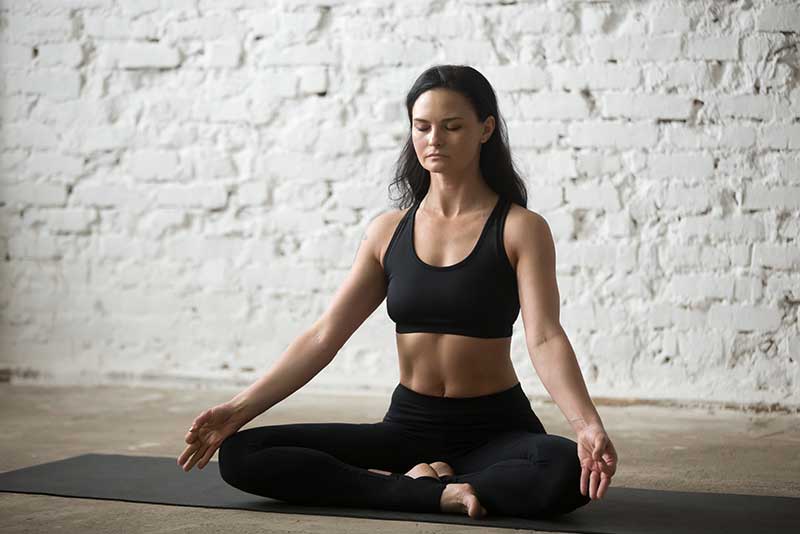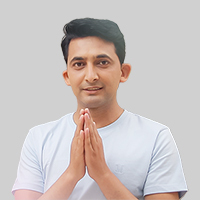In today’s world of constant distractions and forgetfulness, it’s time to give your brain a breath of fresh air! Enter pranayama, the superhero of concentration and memory enhancement. Think of it as yoga for your brain, where the control and regulation of breath take centre stage. Buckle up and get better focus and memory as we explore five pranayamas that will make your brain go, “Oh, I remember now!” So put on your mental yoga pants and let’s dive into the world of 5 Pranayama Techniques for Concentration and Memory.
5 Pranayama For Concentration And Memory
1. Kapalabhati Pranayama (Skull Shining Breath):

Kapalabhati pranayama is known as the best pranayama for students due to its invigorating and energising effects. It involves forceful exhalations and passive inhalations. This pranayama enhances concentration and attention span while clearing the mind and increasing the brain’s oxygen supply. Spend a few minutes each day performing the Kapalabhati pranayama, then gradually lengthen the practice as time goes on.
2. Nadi Shodhana Pranayama (Alternate Nostril Breathing):

Nadi Shodhana pranayama is another pranayama for concentration and memory. It is a balancing method that balances the body’s energy flow. It balances the left and right hemispheres of the brain by alternating the breath through the nostrils. This breathing technique improves mental clarity, reduces tension, and improves memory and focus. Daily Nadi Shodhana pranayama practice should last between five and ten minutes for optimising its benefits.
3. Bhramari Pranayama (Bee Breath):
Bhramari pranayama is a calming technique that involves creating a humming sound during exhalation. This practice has a soothing effect on the nervous system, reducing anxiety and promoting relaxation. By calming the mind, Bhramari pranayama enhances concentration, memory, and overall cognitive function. Incorporate a few rounds of Bhramari pranayama into your daily routine.
4. Sheetali Pranayama (Cooling Breath):
Sheetali pranayama is a cooling breathing exercise that involves inhaling through a rolled tongue or the gaps between the teeth, followed by a slow exhalation through the nose. This pranayama helps to lower body temperature, reduce mental and emotional agitation, and enhance focus and concentration. Practising Sheetali pranayama for a few minutes daily, especially during times of mental fatigue or stress can provide plenty of calm and focus in your studies or work.
5. Anulom Vilom Pranayama

Anulom Vilom Pranayama is one of the best pranayama for concentration and memory. Use your right hand while sitting comfortably to practise. Put your right ring finger on your left nose and your right thumb on your right. Use your thumb to cover your right nostril and take a deep breath through your left nose. After that, exhale through your right nostril while pinching your left nostril shut with your ring finger. Continue breathing via your alternate nostrils. By enhancing cognitive function and balancing energy, this rhythmic breathing technique helps to increase memory and concentrate as well as quiet the mind and reduce stress.
These were the best five pranayama for increasing concentration power and memory. If you want to try out some more fun and new breathing techniques to enhance your brain function or if you have any plans for competing with Einstein’s IQ then these Breathing exercises might also work.
Fun And Interesting Breathing Exercises For Students
The below mentioned breathing practices combine pranayama and visualisation techniques to make your brain gyming session more fun and interesting. You might want to give them a try!
The Forget-Me-Not Breath:
Close your eyes, take a deep breath, and repeat after me: “Forget… Forget… Forget… Wait, what was I forgetting again?” This pranayama is perfect for those moments when your memory seems to have gone on vacation. By playfully repeating the word “forget,” you’re actually tricking your brain into remembering the important stuff. It’s like reverse psychology for your memory!
The Laser Focus Breath:
Picture yourself as a superhero with laser beam eyes. Take a deep breath in, and as you exhale, imagine shooting laser beams from your eyes onto whatever you’re trying to focus on. This pranayama not only improves concentration but also adds a fun visual element that keeps your mind engaged and your memory sharp. Just be careful not to set anything on fire!
The Memory Bank Breath:
Sit comfortably and imagine your brain as a bank. As you inhale, visualise gathering all your scattered thoughts and memories and depositing them into your mental bank account. With each exhale, imagine your brain becoming clearer and more organised. This pranayama is like giving your brain a tidy and efficient filing system, making it easier to retrieve information when you need it most.
The Brainstorming Breath:
Sit in a relaxed position, close your eyes, and take a deep breath in. As you exhale, let your mind wander freely and embrace the chaos of thoughts. This pranayama mimics the creative process of brainstorming, allowing your brain to make new connections and associations. It not only enhances creativity but also improves memory by strengthening the neural pathways responsible for information retrieval.
The Memory Palace Breath:
Imagine yourself walking through a magnificent palace filled with rooms and corridors. With each inhale, visualise yourself entering a new room, each representing a different memory or piece of information you want to remember. Take a moment to explore and engage with the details of each room. This pranayama harnesses the power of visualisation and spatial memory techniques to enhance both concentration and memory recall.
Conclusion:
Incorporating these pranayamas and breathing practices into your daily routine can significantly improve concentration and memory. However, like any practice, consistency is key. Practice these 5 pranayama daily; start with shorter durations and gradually increase the time as you become more comfortable. Along with pranayama, it is essential to maintain a healthy lifestyle, get enough rest, exercise regularly, and nourish your body with a balanced diet. With dedication and regular practice, these pranayamas can become valuable tools in your journey toward enhanced concentration, sharper memory, and overall mental well-being. Take a deep breath, embrace the power of pranayama, and unlock your full cognitive potential.
Resources:
- https://www.ncbi.nlm.nih.gov/pmc/articles/PMC4959327/
- https://www.ncbi.nlm.nih.gov/pmc/articles/PMC5755957/

Mr. Vijay Kumar Pandey is an eminent Yoga teacher with 15 years of experience. He excelled himself in Iyengar Yoga under the guidance of revered master BKS Iyengar Read More


